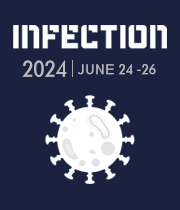Title : Countering bacterial antibiotic resistance on earth and space
Abstract:
Uropathogenic Escherichia coli (UPEC) causes urinary tract infections, e.g., cystitis, which are treated by gentamicin. The protein ss, encoded by the rpoS gene, controls E. coli general resistance. We discovered that rpoS deletion renders UPEC more sensitive to Gm and other bactericidal antibiotics (BAs) e.g., norfloxacin, and proteomic analysis suggested a weakened antioxidant defense (OD) as the reason. Reactive oxygen species (ROS) detectors (psfiA gene reporter/appropriate chemicals) revealed that BAs caused greater oxidative stress (OS) in the mutant; anaerobic conditions (which prevent ROS formation) or co-treatment with an antioxidant decreased the drugs lethality. E. coli strains missing antioxidant proteins (SodA/SodB; KatE/SodA; Zwf/Gnd; TalA) were also more sensitive to these antibiotics. Use of a microfluidic device indicated that the results applied to single cells. Treating UPEC infection of mice bladder corroborated these findings in vivo. Normal metabolism generates ROS, and the results showed that its insufficient quenching increases BA lethality. BAs kill by well-established mechanisms, e. g.., inhibition of protein synthesis, but bacteria have become resistant to these. Our findings show that mitigating bacterial OD can restore BA effectiveness, and using bioinformatic approaches we have identified small molecule that can be co-administered along with BAs to attain this. In microgravity (MG) of space flights, astronauts often suffer from cystitis, and as MG is known to alter bacterial gene regulation, it was unclear whether the above findings would be relevant in treating astronauts. The “EcAMSat” Stanford-NASA mission showed, however, that antagonizing OD has the same beneficial effect in combating UPEC as on Earth. EcAMSat employed a free-flying “nanosatellite” equipped with a highly sophisticated microfluidic system for autonomous determination of UPEC sensitivity to Gm in space flight and its telemetric transmission in real time to Earth. Bacterial multidrug resistance (MDR), such as the one regulated by the emrRAB operon and the EmrR protein is an additional problem for controlling bacterial infections. Its activation is due to alteration in the EmrR protein conformation, which too can be prevented by small molecules and bioinformatic approaches that we have pursued.



